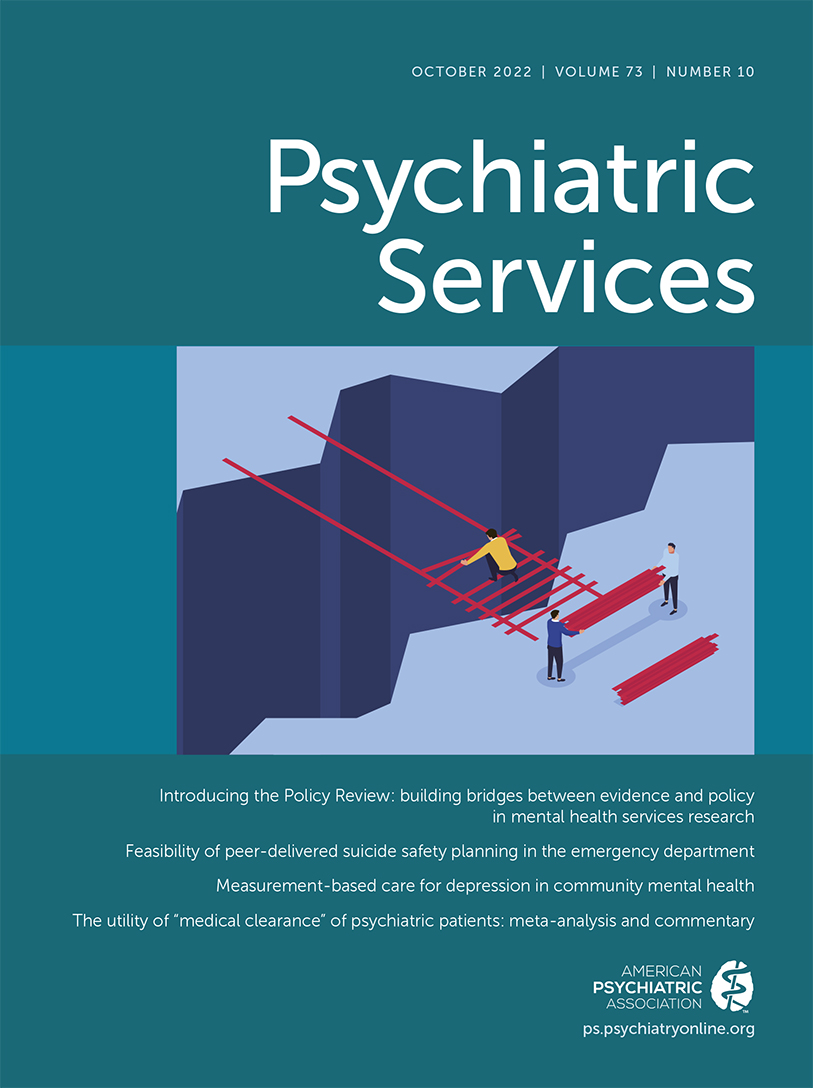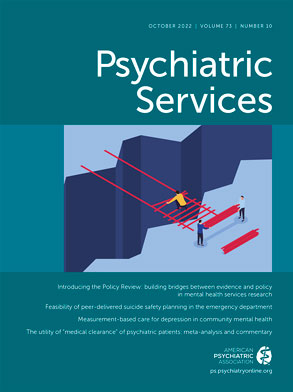People with mental disorders often encounter a work environment that is unsupportive and that may be actively hostile to their needs. In part, this adverse experience may account for the low rates of employment among people with mental disorders: compared with people without disabilities, those with a “moderate psychiatric problem” are three times more likely to be out of the U.S. workforce, at rates approaching 50% (
2). Nor do things appear to be improving. Indeed, newly released data show that complaints of workplace discrimination based on mental disorders filed with the U.S. Equal Employment Opportunity Commission (EEOC) increased from 20% of all complaints in 2010 to 30% in 2021. Anxiety and PTSD between them accounted for 60% of all complaints based on mental disorders in 2021, up from 35% in 2010 (
3).
Although discrimination at work against people with mental disorders is common, remedies are available. The Americans with Disabilities Act (ADA), passed by Congress in 1990, outlaws discrimination on the basis of disability—including mental disabilities—by employers with at least 15 workers. However, the ADA’s provisions are complex, and the protections that it provides are frequently undercut by the courts. To understand why that is and what role mental health professionals can play in helping their patients maintain employment, we turn to the ADA itself.
Applying the ADA in the Workplace
The intent of Congress in passing the ADA was to facilitate the integration of people with disabilities into the national workforce. Title I of the ADA provides that “No covered entity [i.e., an employer with at least 15 workers] shall discriminate against a qualified individual on the basis of disability” (Sec. 12112). A disability, in turn, is defined as “a physical or mental impairment that substantially limits one or more major life activities” [Sec. 12102 (1)]. Whether an individual is “qualified” for the job is determined by whether he or she “with or without reasonable accommodation, can perform the essential functions of the employment position that such individual holds or desires” [Sec. 12111 (8)]. As a corollary, an employee can request an accommodation that may include “job restructuring, part-time or modified work schedules, reassignment to a vacant position,” and other modifications [Sec. 12111(9)(b)].
However, in interpreting the original ADA language, the U.S. Supreme Court issued a series of rulings that narrowed the scope of the law (
4). A prime example is
Toyota Motor Manufacturing, Kentucky, Inc. v. Williams, in which the court narrowed the definition of what constituted a major life activity for the purpose of determining whether the person was disabled, ruling out a person’s job as such an activity (
5). In addition, in
Sutton v. United Airlines, the Court held that successful treatment for a disabling condition meant that the ADA no longer protected an employee—even if the employer used the condition as the basis for an adverse employment decision (
6). By the late 1990s, employers were reported to have won 93% of the discrimination claims brought against them at the trial court level (
7).
Congress responded to the perception that the courts had rendered the ADA ineffective by passing the ADA Amendments Act of 2008. The new law modified the ADA by expanding the definition of major life activities to “include, but [not be] limited to, caring for oneself, performing manual tasks, seeing, hearing, eating, sleeping, walking, standing, lifting, bending, speaking, breathing, learning, reading, concentrating, thinking, communicating, and working” [Sec. 12102(2)(A)]. The last several of these activities have clear relevance to people with mental disorders, given the disorders’ capacity to disrupt concentration, thought, and communication.
In addition, Congress specified that “[t]he definition of disability in this chapter shall be construed in favor of broad coverage of individuals” and that “[a]n impairment that is episodic or in remission is a disability if it would substantially limit a major life activity when active,” both provisions with clear applicability to people with mental disorders [Sec. 12102 (4)]. The amendments also require that “[t]he determination of whether an impairment substantially limits a major life activity shall be made without regard to the ameliorative effects of mitigating measures” [Sec. 12102 (4)(i)], a provision that could aid people with treated mental disorders who are nonetheless subject to discrimination on the basis of their condition.
Taken as a whole, the post-2008 ADA should be a potent weapon to prevent or remedy workplace discrimination based on mental disorders. Sometimes, in fact, it is. The car dealership mentioned above that fired its employee with ADHD agreed to pay $100,000 to settle a lawsuit brought on the employee’s behalf by the EEOC, which is charged with enforcing the ADA, and to revise its policies to prevent a recurrence of such behavior. Similar outcomes were achieved by the EEOC in cases against the defense contractor and the manufacturer and in other cases brought on the grounds of discrimination based on a mental disorder (
1). But all is not rosy when it comes to the workplace for people with mental disorders. The courts continue to interpret the ADA in restrictive ways, perhaps reflecting their own biases about mental disorders, which make it difficult for complainants to prove ADA violations.
Limits to ADA Effectiveness
Several of the provisions of the ADA itself suggest arguments that employers can use to contest claims of discrimination and that courts can rely on to rule against workers. As noted, the statute affords employees the right to request modifications of their work environment—the term of art is “reasonable accommodation”—that would allow them to meet their job requirements. For employers and judges, accommodations such as ramps and higher desks to meet the needs of people in wheelchairs are taken for granted as reasonable. But people with mental disorders may require other kinds of modifications to succeed in a work environment that courts may find fail the test of reasonableness. People with mental disorders may need to be insulated from the stress of social interactions with coworkers by being allowed to work alone or to have a different supervisor who can provide oversight in a more supportive way. Yet courts have been extremely reluctant to view such accommodations as reasonable. As one commentator noted, “employees with psychiatric disabilities who have been screamed at, assaulted, treated unfairly by supervisors, or mocked by coworkers have been unsuccessful in seeking accommodation to escape such mistreatment” (
8).
The ADA also allows employers to contest requested accommodations on the grounds that they would impose an “undue hardship,” which is defined as “an action requiring significant difficulty or expense” [Sec. 12111(10)(A)]. This defense often involves an analysis similar to that for the claim that an accommodation would be unreasonable and has led courts to reject such means of reducing stress as assigning a particularly difficult case to another social worker or altering supervisory assignments. Judges often assert that a modification would constitute an undue hardship without requiring employers to prove that significant difficulty or expense would be involved (
9). Moreover, courts are generally disinclined to require implementation of an accommodation on a trial basis to ascertain its effectiveness in allowing the employee to meet the requirements of the job or to determine whether its difficulty or cost is excessive (
8).
Although the 2008 amendments to the ADA, which create broader standards for determining whether someone is disabled, appear to have made it easier for employees—including those with mental disorders—to establish their disability status, they have shifted the focus in many cases to whether the plaintiff is actually qualified to hold the job. That is, courts now more frequently address whether a person can perform the essential functions of the job with or without accommodation and find against the worker with a mental disability (
10). Given the reluctance of the courts to require changes in the behavior of other employees or supervisors whose actions may be distracting and stressful, a person with a mental disorder may be required to tolerate the stress caused by these interpersonal interactions or be found unqualified for the position. Similarly, arriving on time may be deemed an essential part of the job, and an employee who has difficulty doing so—perhaps because depression or anxiety make it difficult to get out of the house in the morning—will be considered unqualified (
10).
Why are the courts so unsympathetic to people with mental disorders who are seeking the protections of the ADA? Notwithstanding the explicit coverage of mental disorders by the law, there has always been some degree of resistance to viewing physical and mental disabilities as equivalent. Indeed, one of the original supporters of the ADA, Sen. Warren Rudman of New Hampshire, was reluctant to include mental disorders in the law, because the diagnosis “is frequently made on the basis of a pattern of socially unacceptable behavior and lacks any physiological basis. . . . [W]e are talking about behavior that is immoral, improper or illegal and which individuals are engaging in of their own volition” (
10). Although an extreme view, it may nonetheless be shared by judges, along with concerns that mental illness can easily be faked, that it represents a threat to other workers (which would remove it from coverage under the ADA), and that it is too difficult to accommodate.
Assisting Workers With Disabilities
Statutory changes may be needed to render the ADA more effective in protecting the rights of workers with mental disorders. One legal writer, for example, has suggested that the standard of undue hardship, which allows employers to avoid implementing accommodations, should be modified. Another section of the ADA stipulates that businesses that directly serve the public are required to accommodate clients’ and customers’ disabilities unless doing so “would fundamentally alter the nature of the good, service, facility, privilege, advantage, or accommodation being offered” [Sec. 12182(b)(2)(A)]. Application of a similar “fundamental alteration” standard to workplace discrimination might undercut employers’ claims of excessive effort or cost associated with accommodations for workers with mental disabilities (
9). Alternatively, enhanced guidance from the EEOC, which can be accomplished without legislative change, could encourage employers to consider and adopt the kind of accommodations, such as approaches that would reduce workplace stress, that courts have been reluctant to require.
Mental health professionals, however, can play an important role in helping to implement reasonable accommodations, even in the absence of statutory change. People with mental disorders may be reluctant to reveal their conditions to their employers to request an accommodation because of concern about stigma and discrimination. Clinicians can encourage patients in appropriate cases to seek an accommodation before their difficulties at work result in unsatisfactory performance that might constitute the basis for termination. Should a patient decide to seek accommodations, the EEOC has produced a helpful guide indicating the components of a report that will support the patient’s request: including the nature of the patient’s condition, the patient’s functional limitations in the absence of treatment, the need for a reasonable accommodation, and what that accommodation might be (
11). Being able to work conveys benefits that are both practical and intangible for people with mental disorders. Clinicians should be prepared to assist their patients to take advantage of their rights under the ADA to do so.

